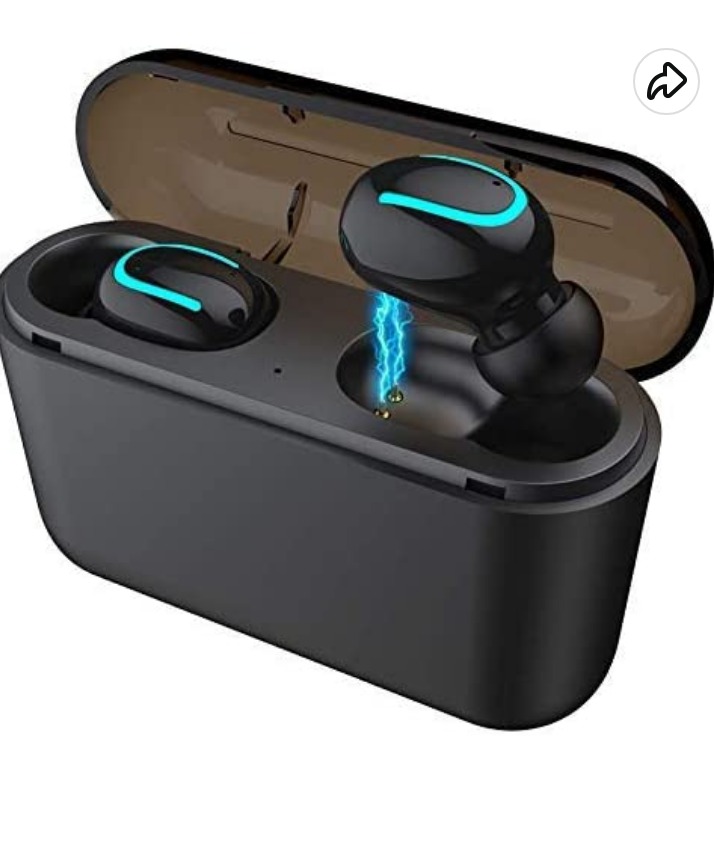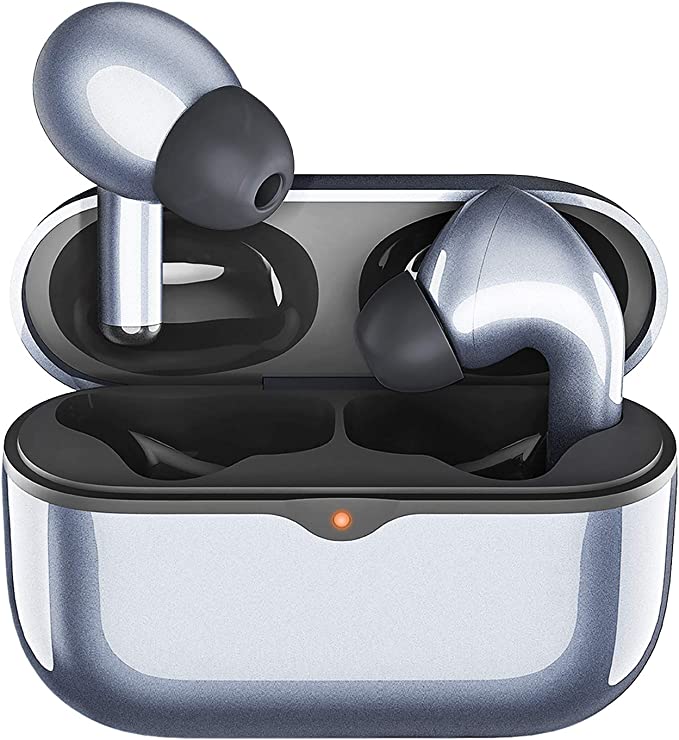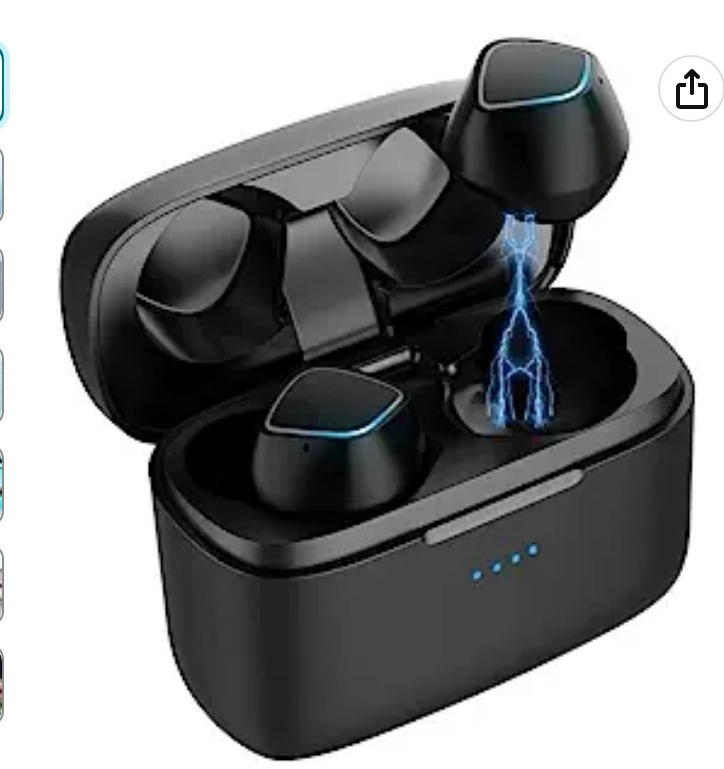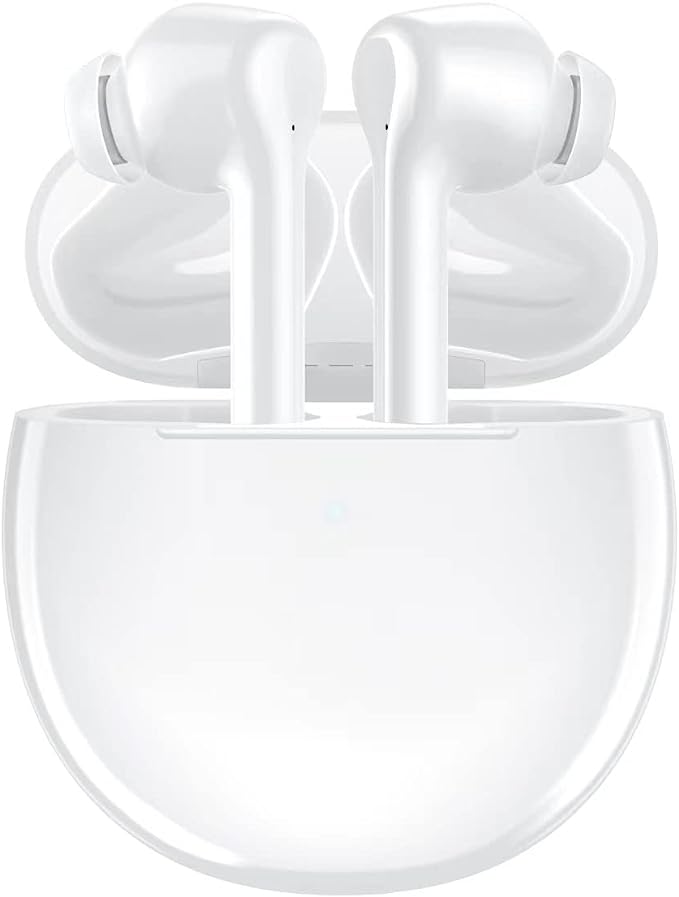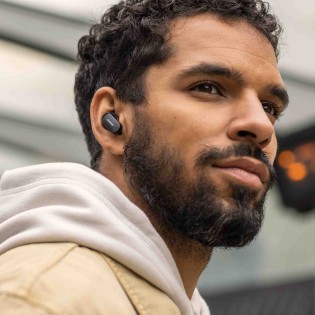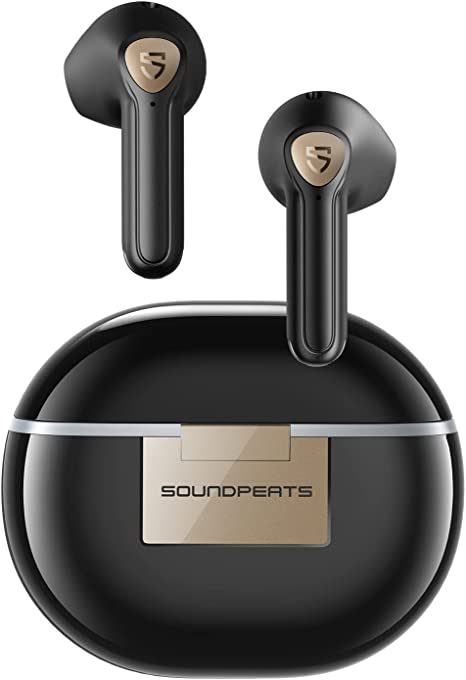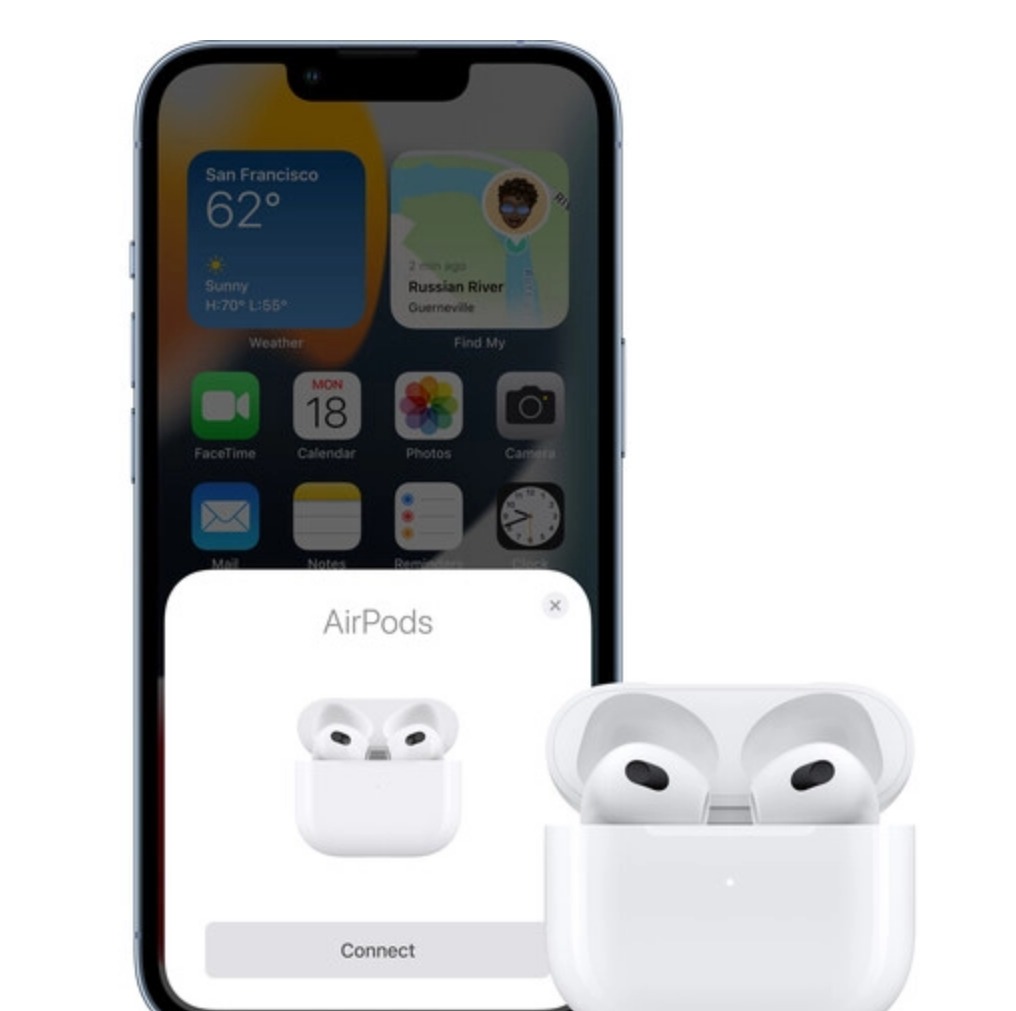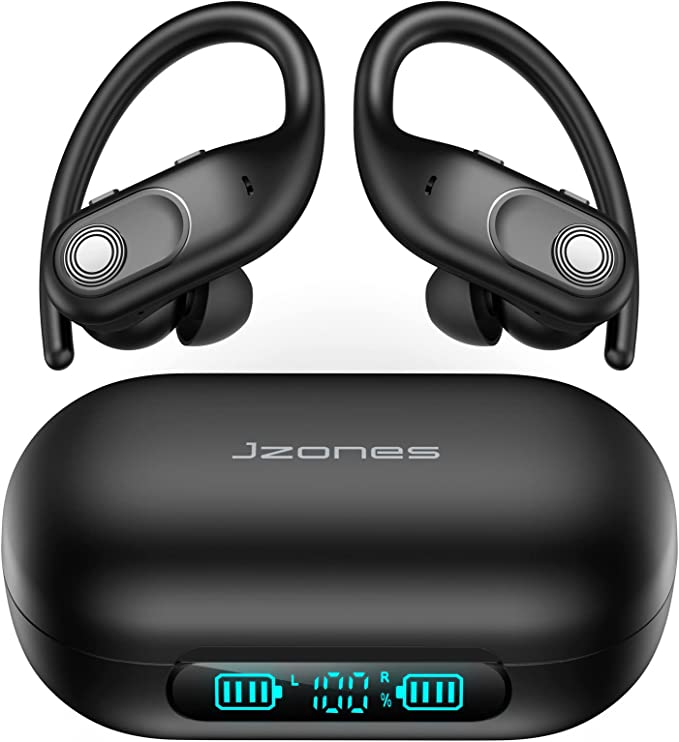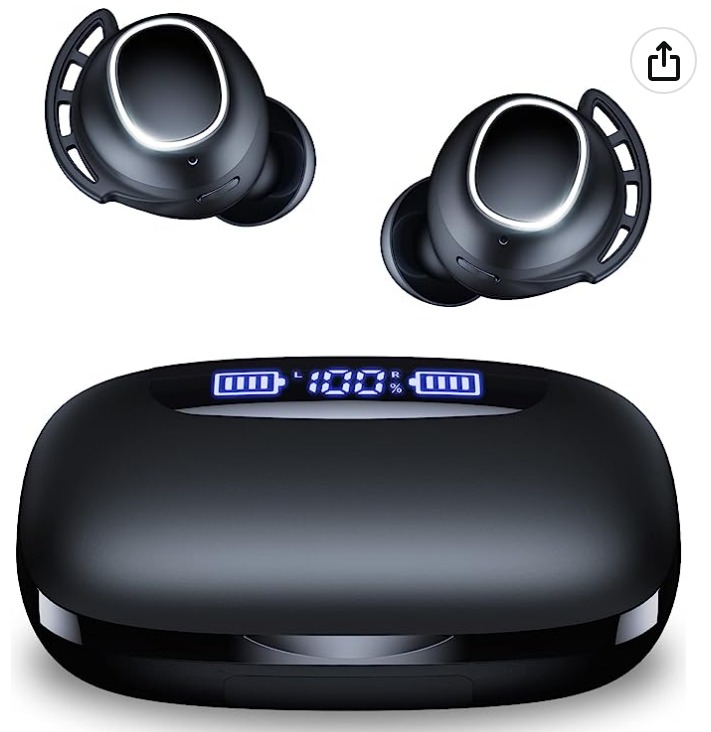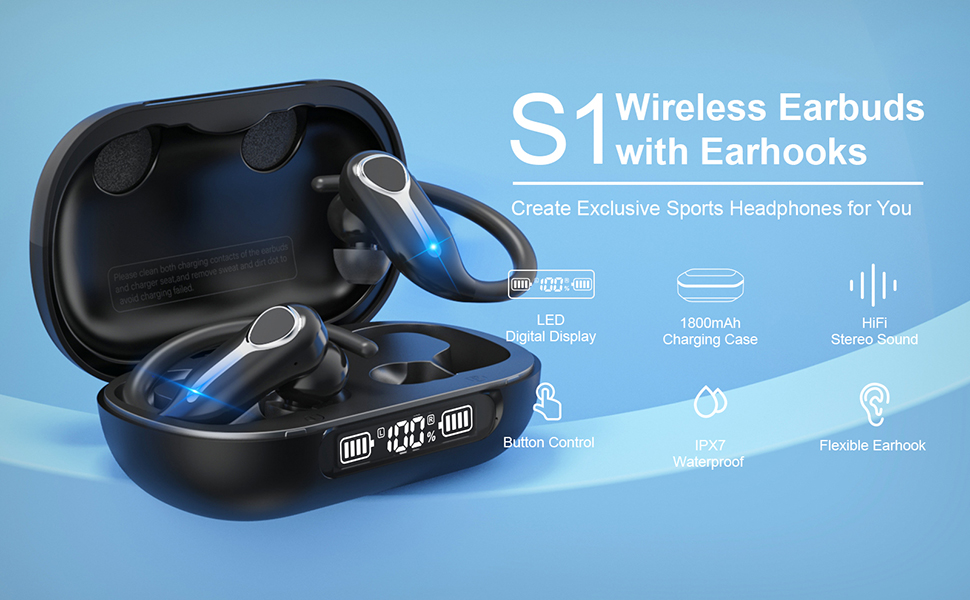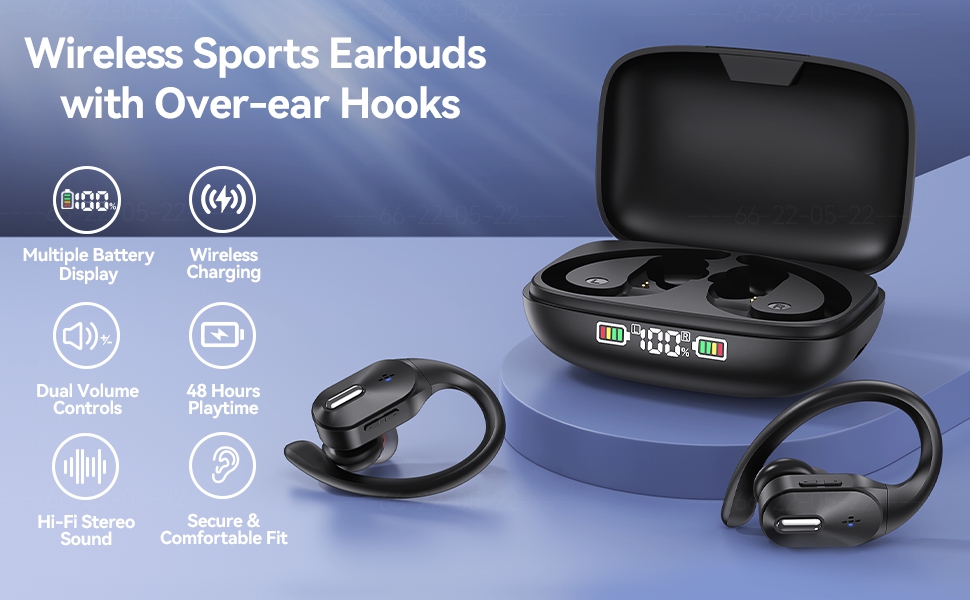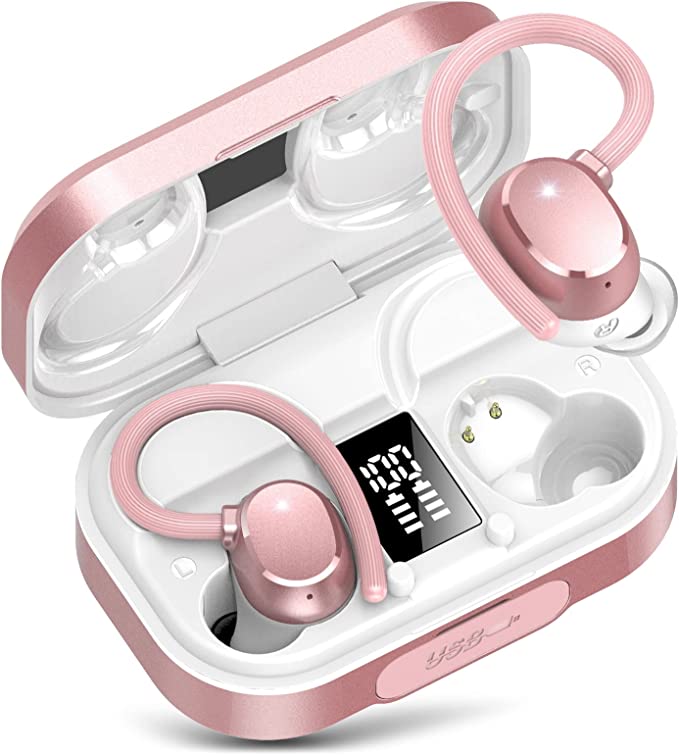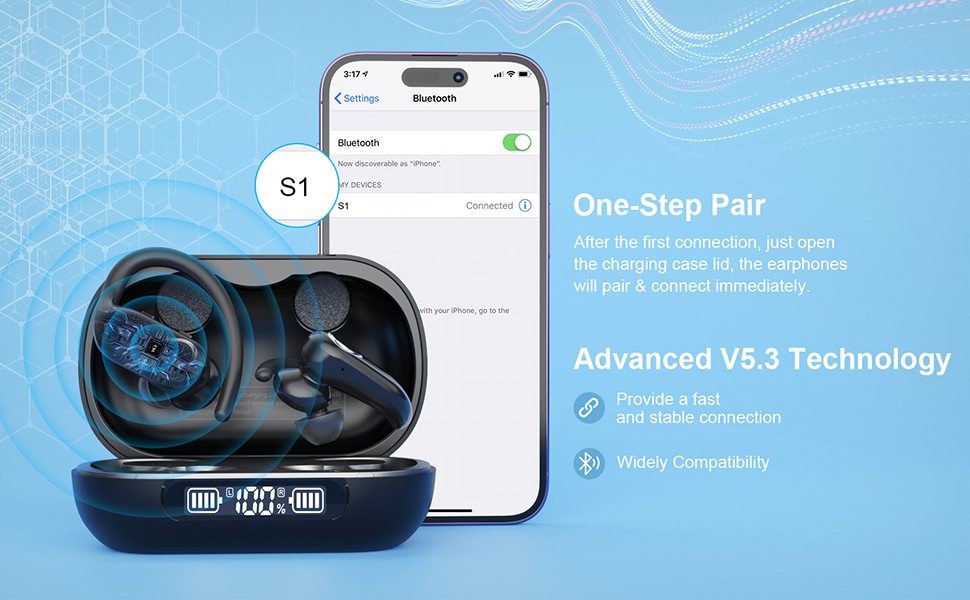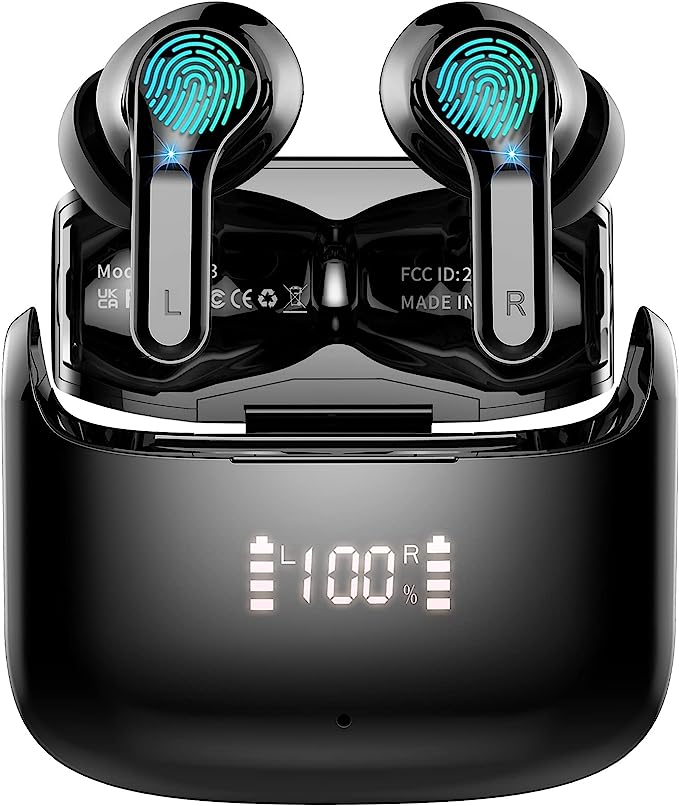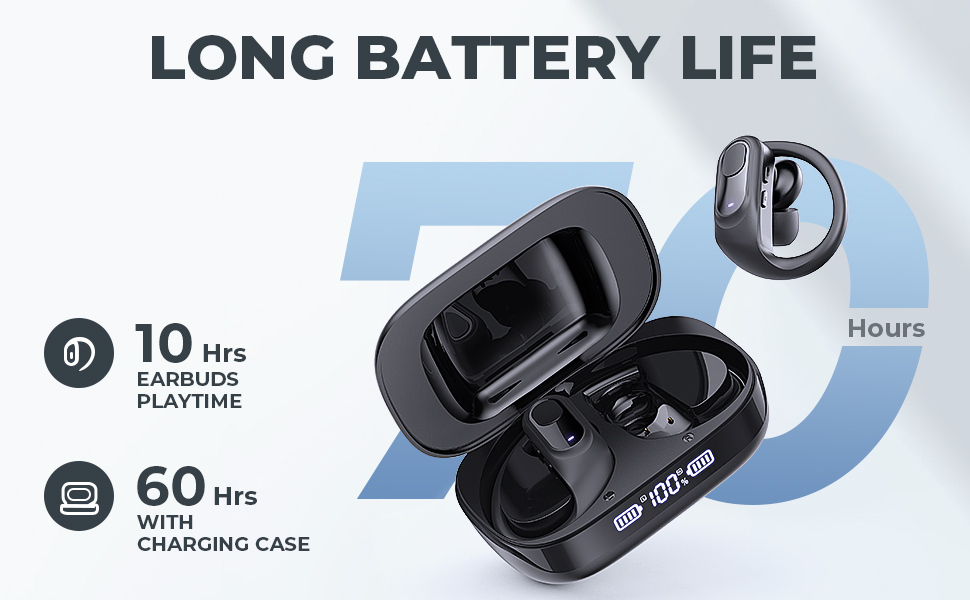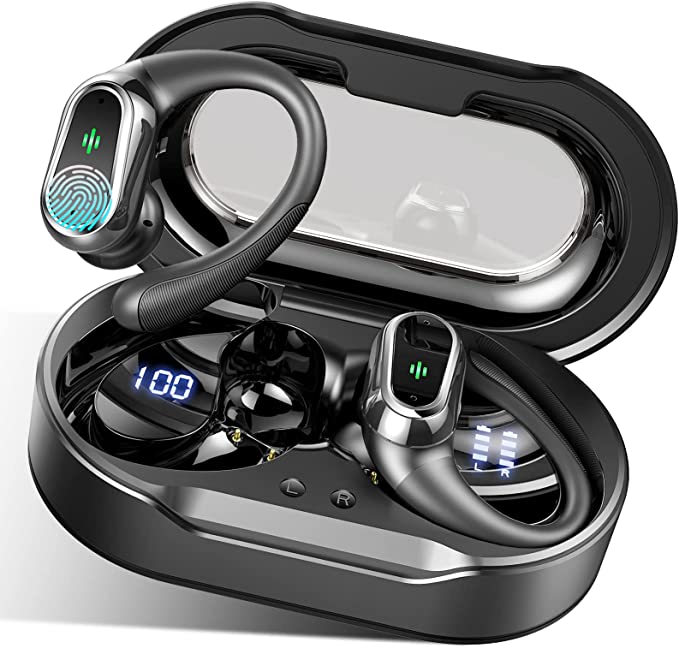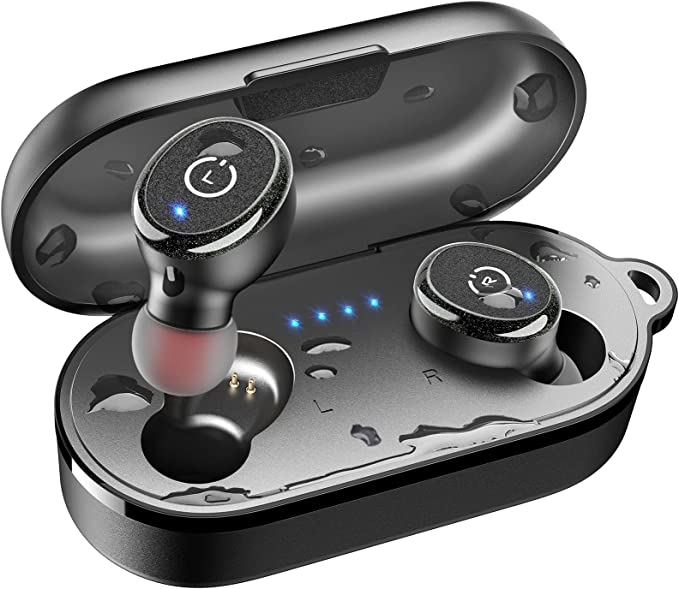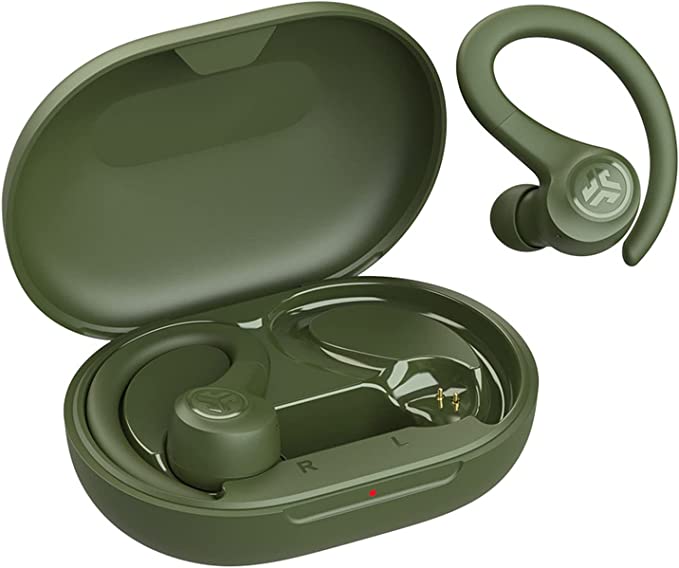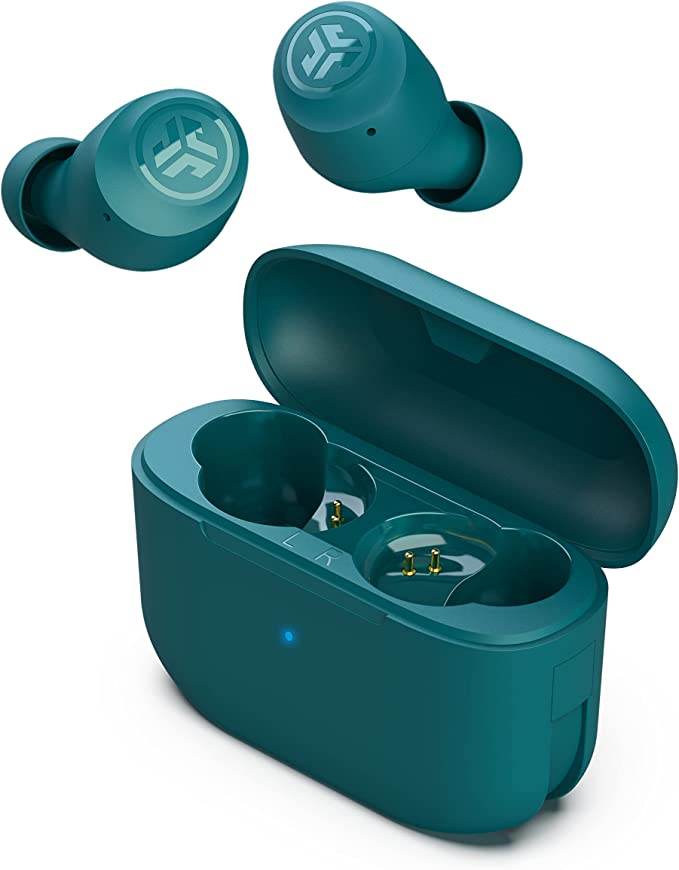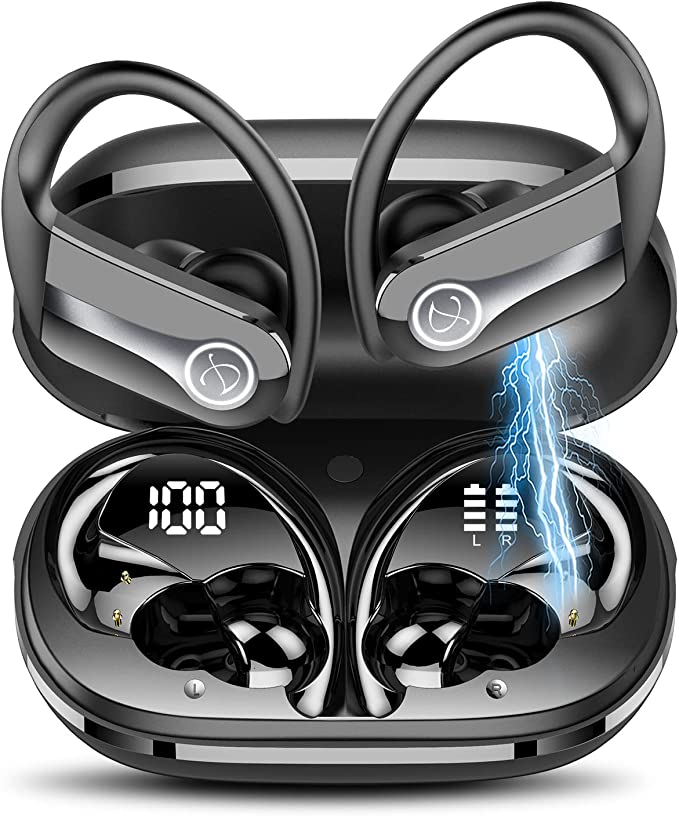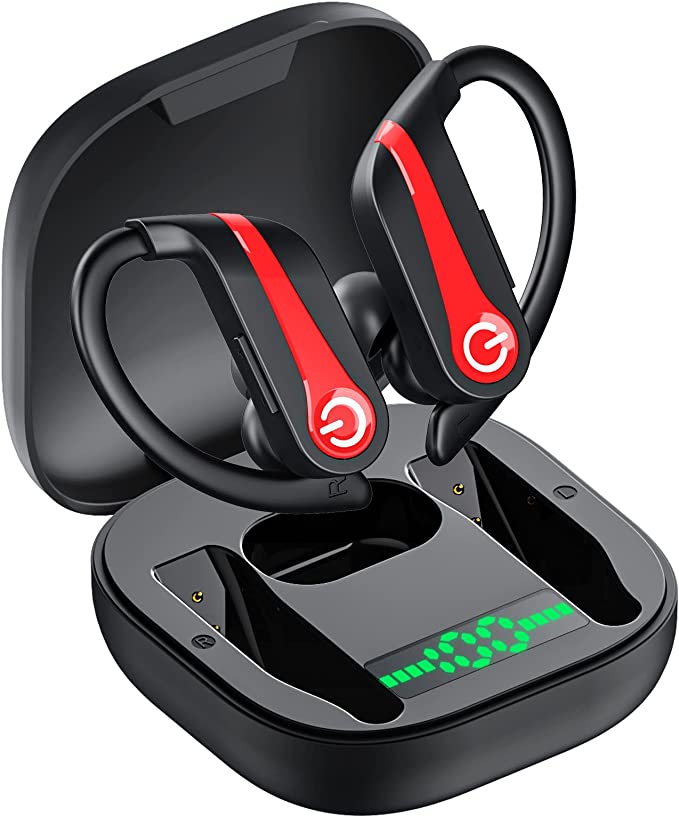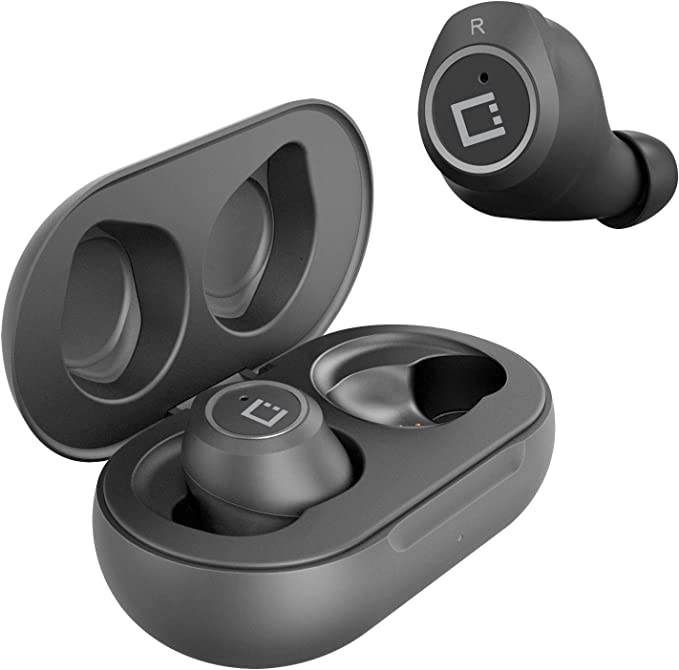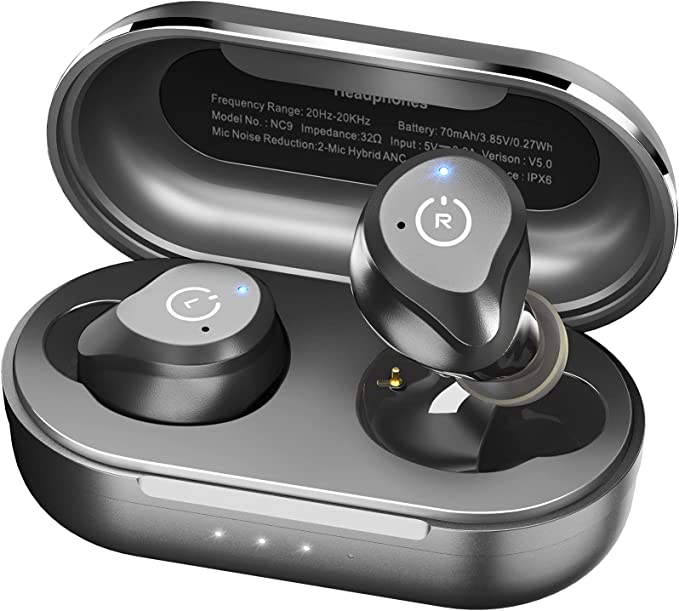Integral Memory ASMY Wireless Earbuds: A Budget-Friendly Option
Update on June 23, 2025, 12:36 p.m.
In our hyper-connected world, wireless earbuds have become almost an extension of ourselves – tiny conduits to our favorite music, podcasts, and conversations. We pop them in, press play, and are instantly transported. But have you ever paused to consider the sheer amount of scientific ingenuity packed into a device as compact and, in the case of the Integral Memory ASMY Wireless Earphones, as remarkably accessible? Let’s embark on a journey to unveil this everyday magic, exploring the unseen symphony of science that makes these little wonders sing.

The Invisible Tether: Bluetooth’s Dance of Data
Our journey begins with the very essence of “wireless” – Bluetooth. You might be surprised to learn that this ubiquitous technology owes its rather evocative name to Harald “Bluetooth” Gormsson, a 10th-century Danish king famed for uniting disparate Danish tribes. Similarly, Bluetooth technology was conceived to unite different communication protocols. The Integral Memory ASMY employs Bluetooth 5.0 with EDR (Enhanced Data Rate), a sophisticated iteration of this wireless standard.
At its core, Bluetooth operates using radio waves in the 2.4 GHz Industrial, Scientific, and Medical (ISM) radio band – the same busy airspace frequented by Wi-Fi routers and microwave ovens. To avoid a cacophony of interference, Bluetooth performs a clever trick called frequency hopping (Adaptive Frequency Hopping or AFH, more precisely). Imagine it as a nimble dancer deftly switching steps (frequencies) hundreds of times per second to find a clear path for its signal. This is crucial for the “stable transmission” the ASMY aims to provide. The “5.0” version brings enhancements in speed, range (the ASMY specifies an operating distance of “less than fifteen meters”), and, importantly, energy efficiency. EDR, or Enhanced Data Rate, acts like giving our signal-carrying courier a significant speed boost, allowing more audio data to be transmitted in the same amount of time, which can contribute to richer, more detailed sound.
Then there’s the marvel of TWS (True Wireless Stereo). Before TWS, “wireless” headphones often still had a wire connecting the two earpieces. TWS, as utilized in the ASMY, truly liberates your ears. It enables each earbud to receive its own distinct audio channel (left and right) directly from your device, performing a perfectly synchronized audio duet. This complex coordination is key to the immersive stereo experience and contributes to the “faster coupling” ASMY mentions. It’s like having two independent dancers who, without a physical link, move in perfect harmony.

Whispers of Quality: Decoding “CD-Like Sound”
The ASMY earbuds claim to offer “CD-like sound quality.” While this is a subjective marketing term, the pursuit of high-fidelity audio, even in budget-friendly devices, rests on solid scientific principles. Your music, stored digitally on your phone or streaming service, is essentially a series of numbers representing the sound waves. Inside the earbuds, a tiny but crucial component called a Digital-to-Analog Converter (DAC) translates these numbers back into electrical signals.
These electrical signals then energize the drivers – miniature speakers nestled within each earbud. Think of a driver as a tiny piston that vibrates with incredible precision, pushing and pulling the air to create the sound waves that travel down your ear canal and are interpreted by your brain as music or voice. The quality of these drivers, their ability to accurately reproduce a wide range of frequencies (from deep bass to crisp highs, measured in Hertz or Hz) and minimize distortion, is fundamental to the listening experience. While the ASMY doesn’t detail its driver specifications, the aspiration for “CD-like” quality suggests an aim for clarity and detail in this conversion process.
Furthermore, a “stable low latency wireless connection” is vital. Latency is the almost imperceptible delay between when your device sends an audio signal and when you actually hear it. For music, a slight delay might go unnoticed, but for videos or gaming, high latency can lead to that frustrating out-of-sync feeling where dialogue doesn’t match lip movements. Bluetooth 5.0 inherently works to minimize this delay, striving for a more seamless and engaging audio-visual experience.

Braving the Elements: The Science of IPX5 and Nano-Shields
Life happens, and sometimes that means a sudden downpour during your jog or an intense, sweaty workout session. This is where the ASMY’s IPX5 waterproof rating comes into play. The “IP” stands for Ingress Protection, a standard defined by the International Electrotechnical Commission (IEC 60529). The “X” means it hasn’t been specifically rated for dust ingress, while the “5” signifies that the earbuds are protected against low-pressure water jets from any direction. So, while you probably shouldn’t take them for a swim, they are built to withstand rain and sweat, making them a reliable companion for active lifestyles.
The magic behind this resilience often lies in a “waterproof nano coating.” Imagine a surface engineered at a microscopic, nanometer scale to be incredibly water-repellent, or hydrophobic. This is often inspired by nature’s own waterproofing marvels, like the surface of a lotus leaf, where water droplets bead up and roll off effortlessly. This nano-shield creates an invisible barrier, preventing moisture from seeping into the delicate electronics within the earbuds and causing corrosion or short circuits. It’s like equipping your earbuds with an invisible, high-tech raincoat.

The Power Within: Fueling Your Audio Adventures
All this wireless wizardry requires energy, and that comes from the tiny powerhouses nestled within: lithium-ion batteries. Each ASMY earbud houses a 55 mAh (milliampere-hour) battery, while the charging case boasts a more substantial 500 mAh capacity. Lithium-ion batteries are a marvel of applied chemistry, relying on the movement of lithium ions between an anode and a cathode during charge and discharge cycles to store and release electrical energy.
The ASMY promises 4-5 hours of continuous talk or music playback on a single charge. When that runs low, the charging case acts as a portable power bank. With its 500 mAh capacity, it can recharge the 110 mAh combined capacity of both earbuds (55mAh x 2) roughly four to five times, significantly extending your untethered listening pleasure throughout the day. It’s a simple but effective energy management system. The convenience is further enhanced by the design where the “headset will automatically turn off and charge when placed in the dock,” ensuring they’re always ready for your next audio session after a 1-2 hour charge for the case and buds.
A Touch of Genius: The Fingertip Conductors
Gone are the days of fumbling for tiny buttons. The ASMY earbuds feature smart touch controls, allowing you to manage playback, calls, and track selection with a simple tap or two. This seemingly magical interaction most commonly relies on capacitive sensing. Your body, including your fingertips, is naturally conductive. When you touch the designated surface on the earbud, you subtly alter the local electrical field, or capacitance, at that point.
A tiny sensor within the earbud detects this minute change and interprets it as a command – a single tap for play/pause, a double tap to skip to the next track, or a long press to manage calls. It’s a beautifully intuitive system, turning your fingertip into an invisible conductor orchestrating your audio experience.

The Comfort Equation: Ergonomics in Your Ear
For a device designed to be worn for extended periods, comfort is paramount. The ASMY highlights its “ergonomic design” and even suggests “the best angle to wear wireless headsets is 65°.” While the optimal angle can vary slightly between individuals due to differences in ear anatomy, the principle of ergonomic design is to create a shape that fits snugly and securely within the natural contours of the ear (the concha and ear canal). This not only improves stability, preventing the earbuds from falling out during movement, but also distributes pressure evenly to minimize discomfort.
A good in-ear fit, as encouraged by ergonomic design, also contributes to passive noise isolation. By creating a seal within the ear canal, the earbuds physically block out a certain amount of ambient sound, allowing you to immerse yourself more fully in your music or podcast without needing to crank up the volume to potentially unsafe levels. The “plastic” material mentioned for the earbuds, likely a common choice like ABS or polycarbonate, is selected for its light weight, durability, and ability to be molded into complex ergonomic shapes.
Speaking a Universal Language: Bluetooth Profiles and Compatibility
You might wonder how your ASMY earbuds seamlessly connect to your iPhone one day and your Android tablet the next. This universal harmony is largely thanks to Bluetooth profiles. Think of profiles as sets of rules or specific capabilities that define how Bluetooth devices interact for particular functions. The ASMY supports key profiles like:
* A2DP (Advanced Audio Distribution Profile): This is the workhorse for streaming high-quality stereo music.
* HFP (Hands-Free Profile) and HSP (Headset Profile): These enable call functionality, allowing you to use the earbuds for phone conversations, complete with microphone input.
* AVRCP (Audio/Video Remote Control Profile): This profile is what allows your touch controls on the earbuds to command your phone’s media player (play, pause, skip, etc.).
By supporting these standard profiles, the ASMY ensures it can “speak the same language” as a vast array of Bluetooth-enabled devices, from smartphones (iPhone, Samsung, Huawei, Sony, Android) to laptops and tablets.
Conclusion: The Symphony of Science in Your Pocket
The Integral Memory ASMY Wireless Earphones, despite their modest price tag, are a compelling testament to the incredible advancements in modern science and engineering. From the sophisticated dance of radio waves in Bluetooth 5.0 and the seamless synchronization of TWS, to the microscopic water-repelling shields of nano-coatings and the precise energy management of lithium-ion batteries, each feature is a note in a complex symphony. Add to this the intuitive elegance of capacitive touch and the thoughtful considerations of ergonomic design, and you have a device that, while seemingly simple, encapsulates decades of research and innovation.
The next time you pop in your ASMY earbuds, or any wireless audio device for that matter, take a moment. Listen not just to the music, but to the quiet hum of the incredible science working tirelessly to bring that sound to your ears. It’s a reminder that even the most everyday objects can hold a universe of wonder, making sophisticated technology an accessible part of our daily lives.
